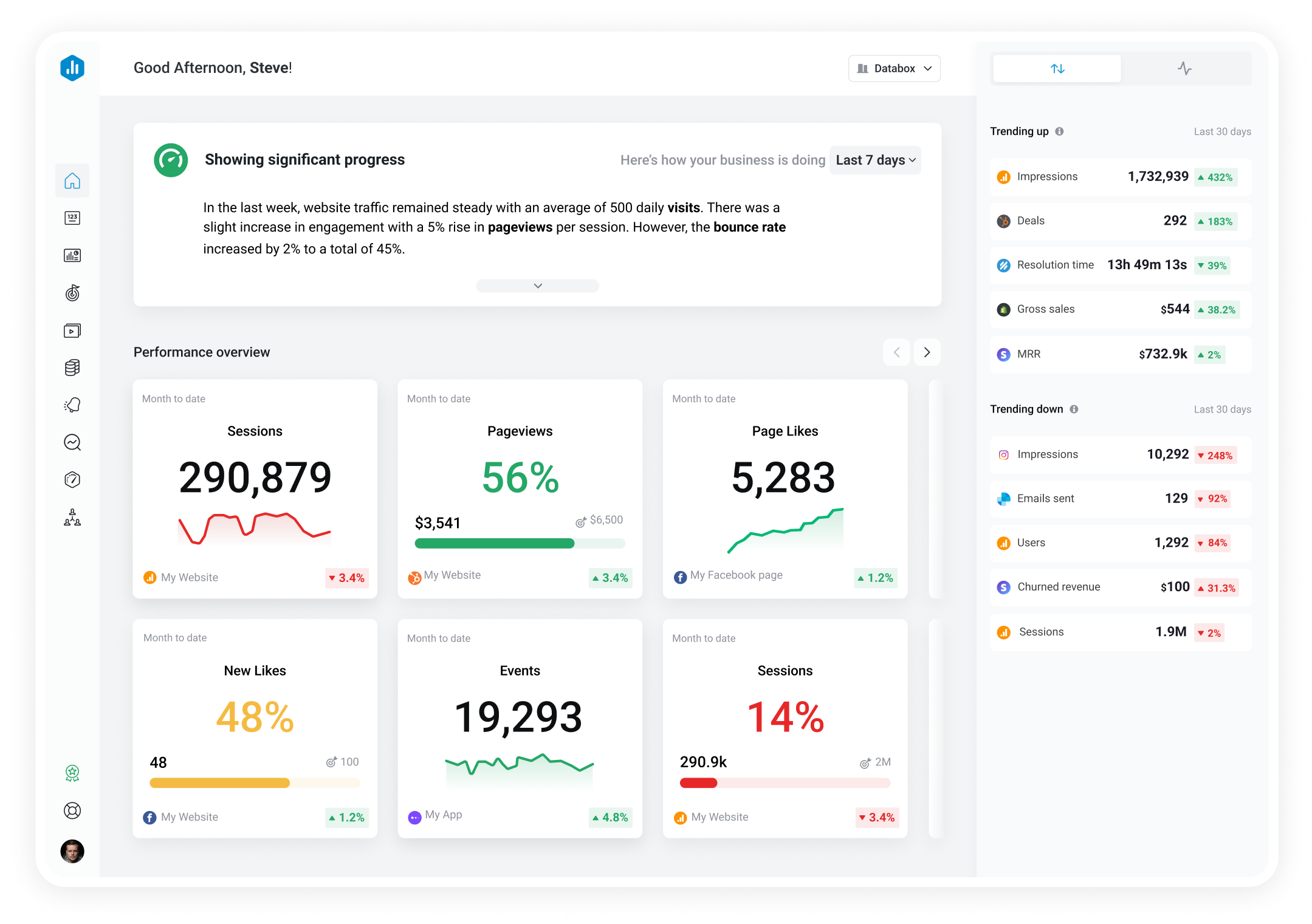Track all of your key business metrics from one screen
GET STARTED
 Google Analytics 4
Bounce Rate
Google Analytics 4
Bounce Rate Bounce Rate is a metric in Google Analytics that represents the percentage of visitors who leave a website without interacting with other pages or elements on the site.
With Databox you can track all your metrics from various data sources in one place.

Used to show a simple Metric or to draw attention to one key number.
Databox is a business analytics software that allows you to track and visualize your most important metrics from any data source in one centralized platform.
To track Bounce Rate using Databox, follow these steps:
 Goals
Goals Scorecards
Scorecards Metric Digest
Metric Digest Metric Builder
Metric Builder Data Calculations
Data Calculations Performance Screen
Performance ScreenThis template moves you through the Attract stage by showing your social media follows and reach, blog view performance, and overall visibility trends.







Unlock e-commerce insights with our Shopify + Google Analytics 4 dashboard. Monitor Audience Overview, Sessions, Sales, Bounce Rate, and Customers Overview for data-driven decisions.


This dashboard gives an overview of user acquisition and behavior on your website based on Google Analytics data.


Take control of your website's performance with this Report. Get a complete picture of your traffic, leads, email campaigns, and more—all in one place. Perfect for ensuring your marketing efforts are driving results and keeping your team aligned.


Use this Google Analytics report to analyze and share insights into your website analytics.


